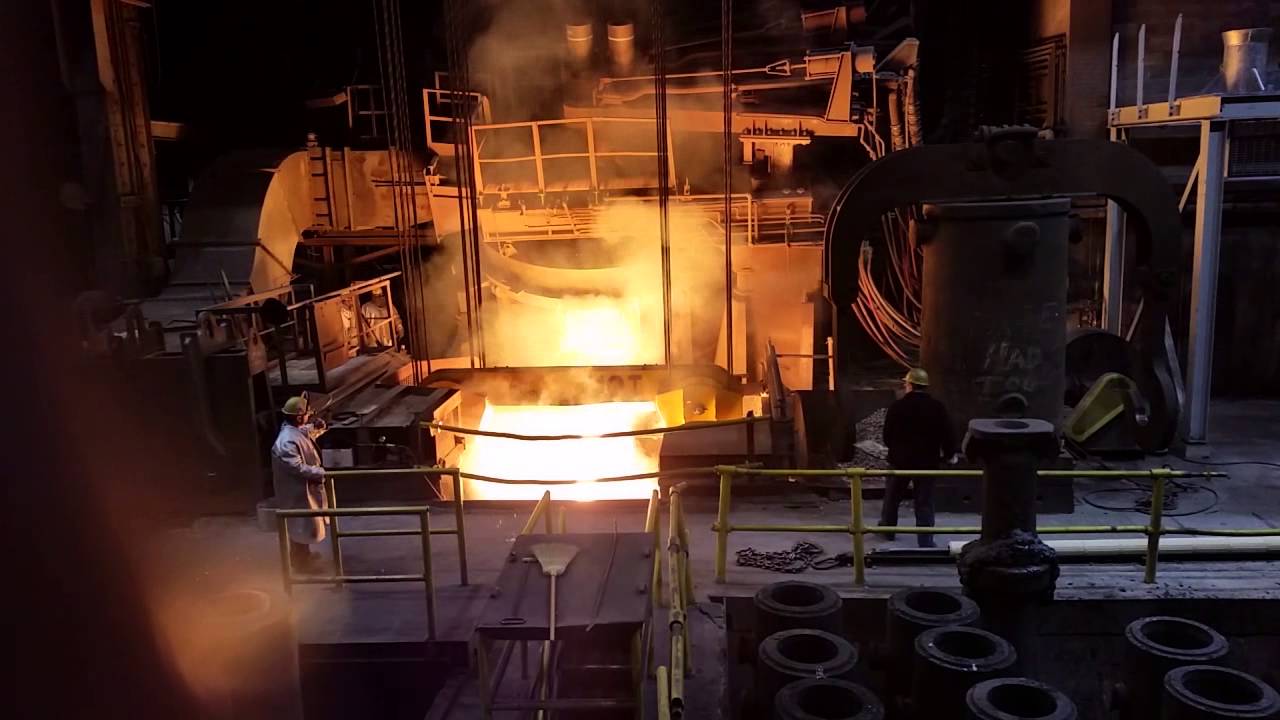Iran’s huge gas reserves have been a boon to the domestic steel industry. For years, Iranian steelmakers have relied on cheap gas feedstock to boost production using direct-reduced iron, believing Iran’s energy advantage compared to other global rivals is the key to higher value-added for the industry, both in steel production and raw material exports.
Many experts, on the other hand, argue that by turning to other types of feedstock such as scrap iron, the industry can become more efficient and reduce its production costs, which will eventually lead to higher competitiveness.
According to Sefid Dasht Steel Complex Managing Director Mahmoud Arbabzadeh, steel production has the highest energy consumption rate among Iran’s mining sectors.
“Close to 280 cubic meters of gas are needed to produce a ton of steel using DRI in electric arc furnaces,” he was quoted as saying by SMT Daily.
The industry player noted that close to 85% of Iranian steel are made using DRI.
“The steel industry accounts for 4-5% of Iran’s gas consumption of 90 million cubic meters,” he said.
Arbabzadeh believes the mills’ consumption rate is insignificant and can actually use even more to create higher added-value for the industry.
Echoing the same sentiments, Mohammad Reza Bani-Asadi, the head of Sobh Parsian Steel Industries Group, said gas procurement accounts for about 25% of DRI production costs.
“We are currently having trouble exporting gas. The lingering sanctions are still impeding the process and pipelines required for exports to Pakistan and other regional countries are not ready yet. Therefore, boosting gas consumption in industries to make higher value-added goods is reasonable,” he said.
Bahador Ahramian, a member of Iranian Steel Producers Association, believes that Iran is having trouble using its vast gas reserves efficiently, as neighboring countries are reluctant to purchase gas from Iran at market prices and demand discounts, or are unable to pay.
“What Iran can do with its gas [instead of exports] is to turn it into products derived from gas,” he told Metal Bulletin.
In his view, Iran should not go down the steel product value chain, as it would find lower returns and diminishing margins in competition with cheap finished steel supplies from China.
“The highest equilibrium for Iran is to export DRI to the neighboring region and to the rest of the world,” Ahramian said.
“DRI from Iran should be particularly attractive for steel producers in Europe, which use the electric arc furnace production method. A supply of price-competitive raw materials from Iran could in turn improve their competitiveness.”
World’s 4th Biggest Consumer
Energy consumption in Iran is above global average. According to the Paris-based International Energy Agency, Iran is the fourth biggest consumer of natural gas after the US, Russia and China, three of the world’s leading economies with larger population.
The Persian Gulf country is also the world’s fourth largest producer of natural gas. It produced 173 billion cubic meters of gas in 2014, the highest in the world after the US, Russia and Qatar.
Iran exports natural gas via pipelines to three neighboring countries, namely Turkey, Armenia and Azerbaijan.
Some analysts say subsidies on energy prices are one of the reasons for the wasteful gas consumption at home, among other energy sources.
The country holds an estimated 34 trillion cubic meters of gas, which constitute the biggest natural gas reserves in the world, the BP Statistical Review of World Energy 2015 said.
Officials forecast a 10% increase in Iran’s gas consumption in the current fiscal year that ends in March.
Saeed Momeni, National Iranian Gas Company’s director for gas supply, said Iran’s annual gas consumption is expected to reach 191 billion cubic meters from 171 bcm last year. He added that gas shortage can be avoided if consumption is reduced by 10% nationwide.
Analysts warn that power plants near Tehran could be affected by gas shortage, stressing that it will force them to burn more polluting fuels such as mazut.
Using mazut in power plants will exacerbate air pollution in the sprawling capital that is choking under a thick blanket of smog almost every day.
The Scrap Alternative
Higher scrap iron utilization can help lower steel industry’s energy consumption. Iran’s unbridled DRI output, however, discourages producers from increasing scrap usage.
As Seyyed Taqi Mortazavian, an industry expert, explains, Iranian steel mills use two types of foundry melting furnaces, namely induction and electric arc furnaces. The two types have different energy consumption rates based on the feedstock used in them.
“In both furnaces, the melting operation will use less energy, if scrap is used instead of DRI. This would consequently reduce operational costs,” he said.
Referring to Turkey, a regional steelmaking rival, Mortazavian said, “Turkey has considerably higher energy prices compared to Iran but the neighboring country is a net importer and producer of scrap iron. Even though it predominantly uses electric arc furnaces, it still has a lower finished price than Iranian mills.”
Scrap metals currently make up less than 15% of Iranian mills’ annual feedstock. A depressed construction sector, outdated scrap collection and sorting methods and Iran’s underdeveloped infrastructure for scrap imports prevent the industry from reducing DRI reliance.


